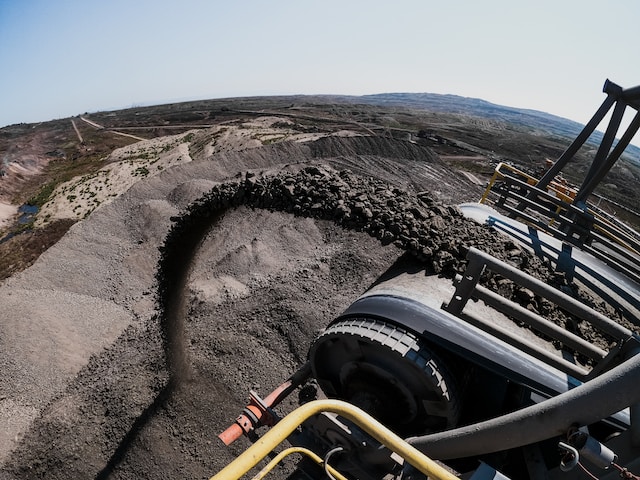Introduction
In the world of bulk material handling, efficiency is paramount. Industries such as mining, power generation, and cement production rely heavily on the seamless movement and storage of massive quantities of materials like coal, ore, and cement. This is where stacker reclaimers come into play, a versatile and indispensable machine that plays a pivotal role in streamlining operations, reducing downtime, and optimizing material storage and retrieval.
Understanding the Stacker Reclaimer
The stacker reclaimer is a specialized piece of machinery designed for two primary functions: stacking and reclaiming materials in large storage yards or stockpiles. Whether it’s coal, iron ore, or other bulk materials, stacker reclaimers are a common sight in industries where material handling is a core component of their operations.
Stacking: When raw materials arrive at a site, they are unloaded and transported to the storage yard. A stacker is responsible for efficiently stacking the materials in predetermined layers or stockpiles. This ensures the efficient use of available space and easy retrieval when needed.
Reclaiming: As materials are required for production or shipment, the reclaiming process begins. A reclaimer is responsible for extracting materials from the stockpile with precision and delivering them to the conveyor systems or transport equipment for further processing or transportation. This process ensures that materials are used effectively and avoids wastage.
Key Features
Bridge and Portal Types: Stacker reclaimers come in two primary configurations – bridge and portal types. Bridge stacker reclaimers are typically used for higher-capacity applications, while portal stacker reclaimers are suitable for smaller storage yards. The choice depends on factors such as yard layout and material volume.
Boom Type: Stackers and reclaimers can be equipped with different types of booms, including fixed, semi-portal, and full-portal. The boom type determines the machine’s reach and flexibility in stacking and reclaiming materials.
Automated Operation: Modern stacker reclaimers often feature advanced automation and control systems, enabling precise and efficient operation. These systems help reduce human intervention, minimize errors, and improve safety.
Dust Suppression: Dust control is a critical aspect of stacker reclaimer operation, as dust emissions can have adverse environmental and health impacts. Many stacker reclaimers are equipped with dust suppression systems to mitigate these concerns.
Benefits of Stacker Reclaimers
Improved Efficiency: Stacker reclaimers are designed to handle materials with speed and accuracy, reducing the time required for material handling processes and increasing overall operational efficiency.
Space Optimization: By creating neatly organized stockpiles, stacker reclaimers maximize the utilization of available yard space, allowing industries to store larger quantities of materials.
Reduced Downtime: Their automation and reliability reduce downtime due to equipment breakdowns or maintenance, ensuring a consistent supply of materials for production.
Enhanced Safety: With automated controls and safety features, stacker reclaimers help minimize the risk of accidents and injuries associated with manual material handling.
Conclusion
In the world of bulk material handling, the stacker reclaimer stands as a critical player in optimizing efficiency, ensuring space utilization, and minimizing downtime. Its role in stacking and reclaiming materials is indispensable for industries that rely on the smooth and efficient movement of bulk materials.
As technology continues to advance, stacker reclaimers are likely to become even more sophisticated, further enhancing their role in modern material handling operations. Whether in mining, power generation, or construction, the stacker reclaimer is a machine that continues to drive efficiency and productivity forward.













Leave a Reply